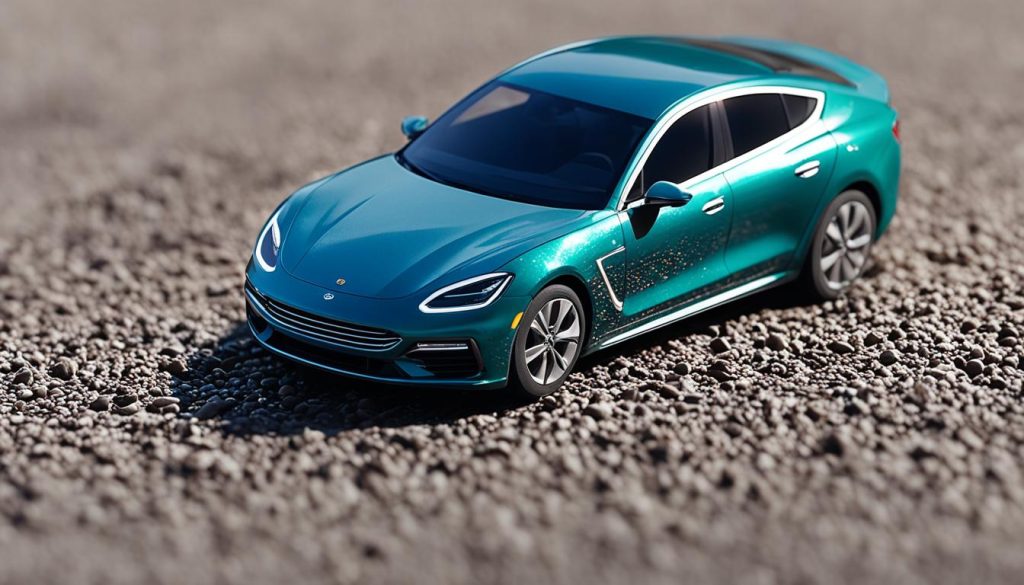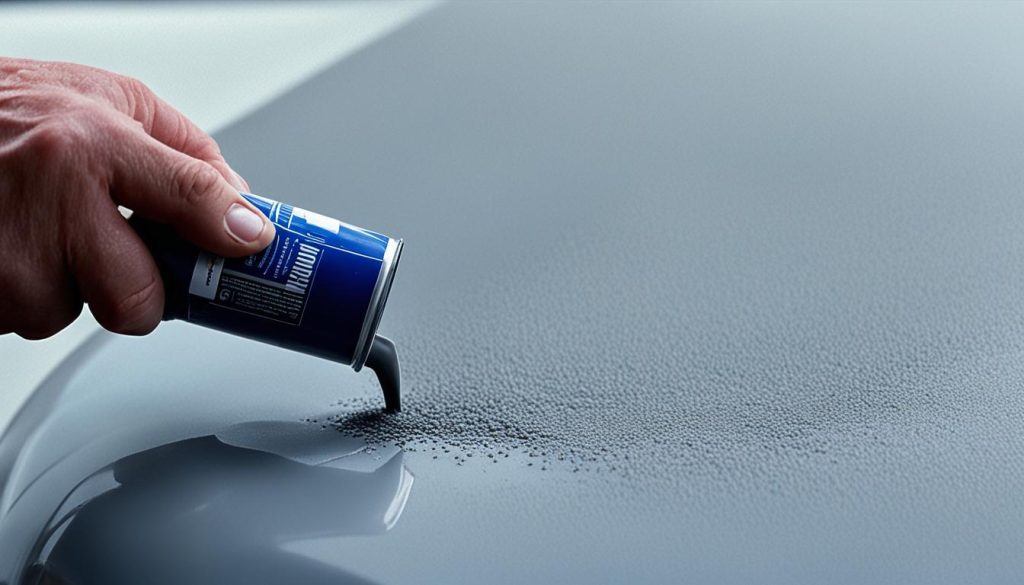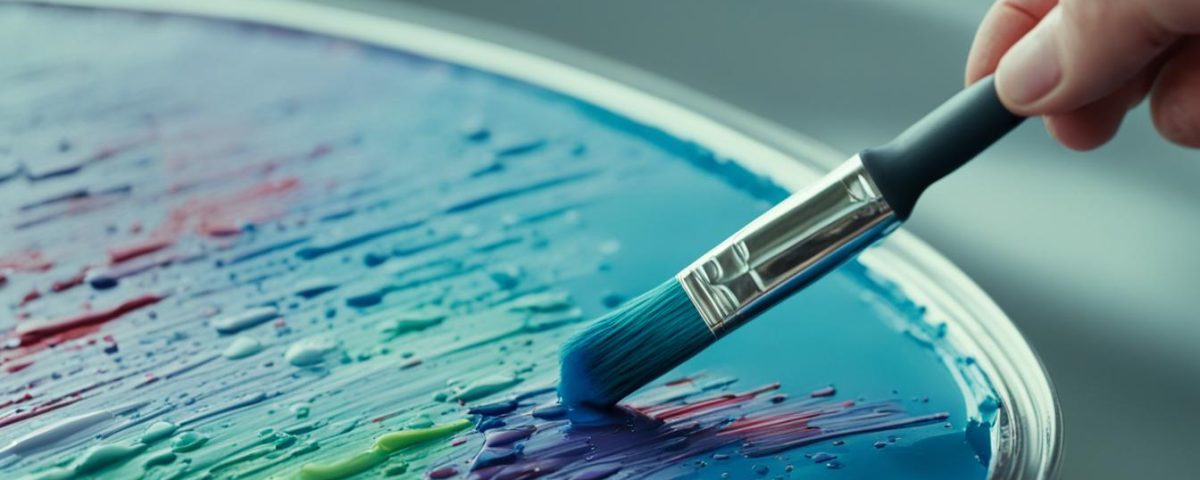- Auto Body Repair - Collision Center
- Leon Valley (210) 680-1987
- Walzem at IH 35 (210) 858-3630
- info@miraclebp.com

What You Need to Know About Collision Repair for Leased Vehicles

DIY vs. Professional Collision Repair: What You Need to Know
Paint chips and scratches can make your car look bad. They can also cause more damage and lower its value. The good news is you can fix small chips yourself. This will help your car look great and avoid rust. We will show you how to do it step by step.
Fixing scratches and chips quickly is important. It helps keep your car in good shape and keeps its value high. You only need a few tools to make the repair smooth. Let’s learn how to make your car look beautiful again and prevent future harm.
Key Takeaways:
- Small paint chips and scratches on your car can be repaired by following a few simple steps.
- Repairing paint chips promptly helps prevent further damage and maintain the value of your car.
- Regularly inspect your car for paint chips and scratches caused by road debris.
- Assess the size and severity of the chip before attempting to repair it yourself.
- Clean the affected area thoroughly, removing any debris and flaking paint.
Determine the Size of the Chip
First, look at the size and seriousness of the paint chip. This assessment is key. It helps us figure out how to fix the chip and make your car look great again.
Chips smaller than a dime are ok for DIY fixes. But, check them for spreading, paint peeling, or rust. If you see these signs, the chip might need a pro’s touch.
Rust often follows a paint chip, and it’s trouble. Watch for reddish-brown spots or a rough feel. Quick action against rust is vital to keep your car safe.
Also, look out for flaking paint. Flaking means the paint is starting to lift. It shows the chip’s damage is beyond just a layer, needing expert help.
Knowing the chip’s size and health is crucial. Small chips can be fixed easily with our advice. But, big chips or those with a lot of rust and paint peeling need a professional’s care.
Image: Determine the Size of the Chip

Clean and Prep the Area
Before fixing the paint chip, make sure the area is clean and ready. This makes the finish look perfect. Here’s how to do it:
1. Thoroughly Clean the Area
Begin by scrubbing the area with mild soap and water. Remove any dirt. Make sure it’s dry before moving on. A clean area is crucial for the next step.
2. Smooth Out Raised Edges
Check for any bumps or rough spots. Use fine sandpaper to make these areas smooth. This step is key to a repair that blends in well.
3. Remove Debris and Flaking Paint
Wipe away dirt and loose paint with a cloth or soft brush. Particularly focus on removing flaking paint. A clean surface ensures the new paint sticks well.
4. Eliminate Grease and Oil
Get rid of grease or oil with rubbing alcohol. Cleaning well helps the paint stay on. It stops the paint from peeling later.
5. Address Rust Issues
If you see rust, get rid of it now. Use a rust remover and clean with alcohol. This stops the rust and your repair will last longer.
Follow these steps to get the area ready for your repair. A clean, smooth area without rust is perfect for painting.
Apply Primer and Paint
When fixing paint chips, applying primer before painting is key. The primer makes the surface smooth. It also helps the paint stick better.
First, pick the right paint color for your car. Use the car’s OEM code for an exact match. If you don’t have the code, find a color that is very close to the original.
For tiny paint chips, try touch-up paint pens. They’re easy to handle and allow for accurate application. Use the pen to fill in the chip smoothly.
Medium and large chips need a different approach. Use a small brush with the touch-up paint. Apply it carefully to the damaged area with smooth strokes.
Always use thin coats of paint. Let each layer dry before adding more. Following this method will give you a perfect, even finish.

Pro Tips:
- Make sure the area you’re painting is clean before you start. It should be clear of dirt and other debris.
- If you’re not sure about the color, test it in a hidden spot on your car first. This way, you can check the match before applying everywhere.
- Be patient and pay attention to detail as you paint. Taking your time can lead to a job well done.
Apply Clear Coat and Finish
When the paint is dry, it’s clear coat time. This coat adds protection and makes things shine. It’s like a shield that keeps the repair looking good for a long time.
To start, give the paint a gentle shake to mix it well. Then, hold it about 6-8 inches from the area. Spray lightly and smoothly, making sure it’s all even. Avoid putting on too much to prevent drips or spots.
Let the clear coat dry according to the label. It usually takes a day. But, always check the can for the exact time.
After it’s dry, get ready to make it perfect. Use a soft microfiber cloth to buff in circles. This corrects any flaws and makes the finish shine even more.
To make it even better, polish a bit beyond the repaired part. This blends everything, making the fix invisible.
Lastly, to keep the whole car sparkly, wax it. Pick a top-quality wax and apply a thin layer. Use a clean applicator pad or a soft cloth. Follow the wax’s directions for the best results.
Waxing regularly guards your car against the sun and water. It also helps your new paint job last longer.
Conclusion
Fixing paint chips is key for a nice look and to stop more hurting. You can handle small ones. But for big chips, get a pro. At StormWise, our experts use top paint. Plus, we give you a forever guarantee.
Fixing paint chips stops rust from starting. This keeps your car’s value up. Our experts know just how to fix big paint messes. They have the skills and smarts needed.
With StormWise, you know your car is in good hands. We promise top work, making your car shiny like new. Time to contact us. Let’s make your car’s paint look great again.


